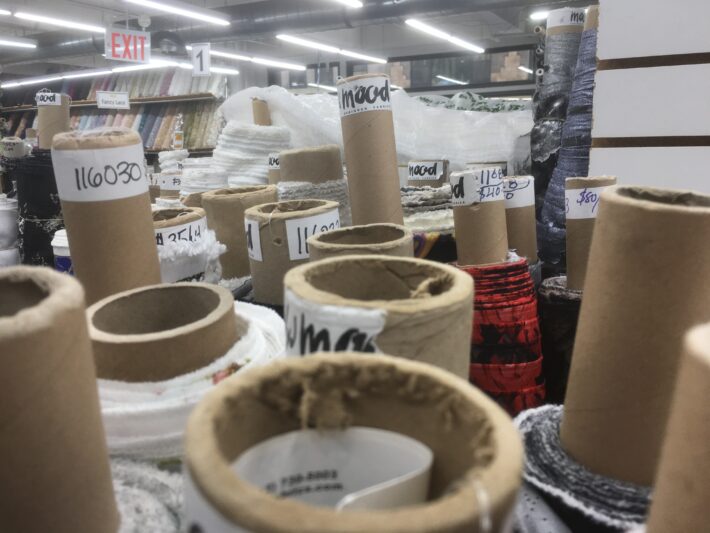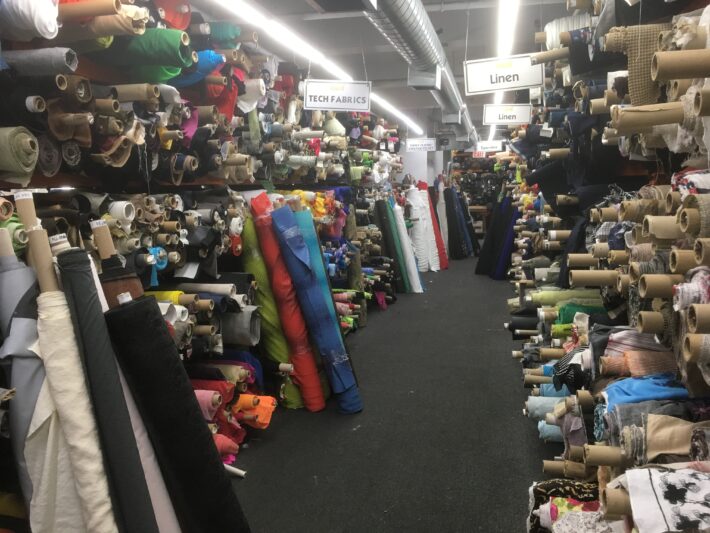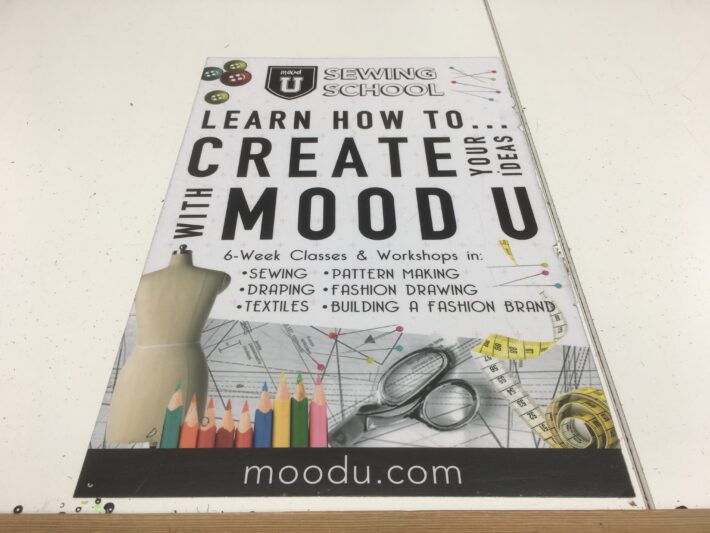
“Project Runway’s” go-to fabric merchant in the Garment District, Mood Fabrics, is in negotiations to purchase three floors of a Manhattan building, hoping to establish a fashion hub for the next generation of designers and fashion students.
Surrounded by cutting tables and dressmaker dummies, Jack Sauma, the owner and founder of Mood Fabrics, said it’s time for the next phase in the store’s evolution. “I should finalize the purchase in eight months,” he said, referring to the new space, which is in the Garment District but whose exact location he won’t divulge.
The lease on his current three-floor, 40,000 square foot. location expires in five years, while the tenant at the new 45,000 sqft. location has a three-and-a-half-year lease. Sauma said he doesn’t plan to interrupt his own lease, so he’ll likely offer to extend the tenant’s lease for another year, go “month-to-month” or use the space for storage. His current landlord knows that he’s in negotiations, Sauma said.
A highlight of new location would be Mood Cafe, a coffee bar with lounge chairs and center tables meant to encourage collaboration and creative exchange. Sauma said the cafe, along with free sewing classes and areas to socialize, is his way of giving back to the Garment District. He envisions the cafe as a hub for young designers and manufacturers, a potential solution to the district’s ongoing dislocation troubles.

For the past decade, Garment District merchants and advocates have battled city officials over rezoning protections. Rising rents have priced out merchants, forcing them to relocate to places like Brooklyn, said Samanta Cortes, executive director of Save The Garment Center, a non-profit organization that advocates for the district’s business owners.
Cortes, who was not aware of Mood’s plans, said that the company’s presence in the Garment District is essential to survival. “Having Mood leave the area would make a big impact,” said Cortes, beccause local designers and manufacturers would experience a dire slowdown in production. “They depend on how close Mood is to fulfill their orders with high-quality materials and high efficiency,” said Cortes, adding that “the tourists who watch ‘Project Runway’ would be crying.”
Anni Kuan, NYC fashion designer, shared Cortes’s concern.
Kuan was in the Garment District for 30 years until high rents pushed her out last December. Now she’s on the Upper West Side. Kuan said being farther away from the Garment District, let alone Mood, has affected her productivity.
“Mood is super important in the Garment Center,” she said. “They are the wheels that move things.” Mood not only sells fabrics to designers, they also buy excess fabric and transport material directly to designer’s studios in the city.
Kuan recalled visiting Mood in 2013 with New York City’s first lady, Chirlane de Blasio, to shop for fabrics in preparation for Mayor Bill de Blasio’s inauguration. They’ve since visited Mood multiple times. “Where else are we going to go?”

Speaking about the changes he’s witnessed in the Garment District over the past two decades, Sauma said he used to see 50 to 60 people working for a single designer, making patterns, cutting, and sometimes manufacturing for high-end retailers. Today, as far as he can tell, most of the floors of nearby buildings are full of what he calls “high-tech” employees. Designers rarely manufacture in-house or in the district, he said, instead relying on China and Vietnam to complete bulk orders.
Ralph Rucci, who has been a designer for 37 years, agreed and said the district’s fate depends on young designers wanting to reinvent the center, restoring it to its former vibrancy. The problem is the lack of appeal. “It is a very depressing area now,” said Rucci. “There is no life or creativity. It’s a very sad situation.”
Once the Mood move is finalized, Sauma plans to expand his school, Mood U, which currently offers free sewing classes to 100 students every six weeks, in addition to business fashion consulting, fashion illustration, pattern making, and adult draping courses.
Sauma also intends to provide open areas for clothesmakers to connect with fashion students from the nearby Fashion Institute of Technology and Parsons School of Design. “At Mood Cafe, I can serve coffee and make space for sewers, designers and fashion students to meet, talk, and share ideas.”
In his office overlooking 37th street, where Mood Fabrics has been for 16 years, Sauma contemplated the Garment District’s future. “Manufacturing won’t come back,” he said. “The future of the Garment Center is artistic.”